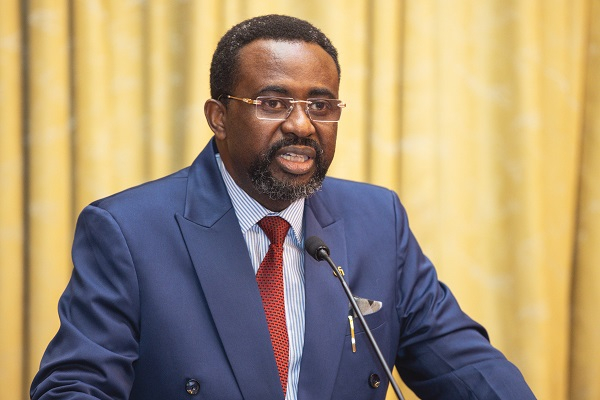By Joshua Worlasi AMLANU & Ebenezer Chike Adjei NJOKU
The Bank of Ghana (BoG) is shifting its strategy for reforming the Specialised Deposit-taking Institutions (SDI) sector, advocating an industry-led consolidation effort supported by strategic equity investment and strengthened governance structures.
Speaking at a post-Monetary Policy Committee (MPC) media engagement after the Bank’s 123rd MPC meeting, Ismail Adam, Acting Head-Banking Supervision Department, said BoG is working closely with the Ministry of Finance and other stakeholders to develop a coherent plan that will revitalise the SDI sector, improve credit delivery and strengthen deposit mobilisation, especially for underserved markets.
“The Bank of Ghana is now emphasising a industry-led consolidation to reshape the SDI sector. This involves attracting equity from strategic investors – some are already engaging SDIs – and revamping governance to ensure proper oversight,” Mr. Adam said.
The regulator’s approach is designed to counteract what it sees as a “mission drift” among some institutions in the sector, which have deviated from their original purpose of extending financial services to the underserved and excluded.
To address this, BoG has set up an internal committee, complementing a separate team of consultants engaged by the Finance Ministry to draft a roadmap for strengthening the SDI landscape.
The SDI sector includes rural and community banks, savings and loans companies, finance houses and microfinance institutions. Many of these entities have been grappling with weak capitalisation, governance lapses and mounting complaints from depositors over unfulfilled obligations.
The central bank’s renewed focus on self-driven reform comes at a time when there is continued pressure from Ghana’s development partners to strengthen the country’s financial sector resolution framework.
The International Monetary Fund (IMF), as part of its ongoing programme reviews, has flagged the need for more robust mechanisms to deal with failing institutions. Yet no clear timeline has been established for rolling out an industry-funded resolution mechanism.
For now, BoG’s strategy relies on enhanced supervision and early warning systems. While liquidation remains legally available, the Bank has been reluctant to deploy it broadly due to both financial constraints and reputational risks.
“The absence of an industry-funded resolution mechanism – akin to the model used in Nigeria – has exacerbated the problem,” Mr. Adam noted. In Nigeria, banks and other financial institutions contribute annually to a resolution fund; enabling timely interventions without triggering taxpayer-funded bailouts.
Ghana, by contrast, still relies on ad hoc fiscal arrangements when intervention becomes necessary – a model that proved problematic during past banking sector clean-ups. The previous approach of waiting for government funding, Mr. Adam acknowledged, created moral hazards as some operators willingly relinquished their licenses – expecting public bailouts and evading accountability.
“Complaints about SDIs failing obligations are rising; and while we acknowledge their struggles, we can’t act instantly without funds,” Mr. Adam said, suggesting that delays in responding to distressed institutions are often tied to resource constraints.
The new framework seeks to address these shortcomings by encouraging consolidation among SDIs through private capital, ensuring that only well-governed and solvent entities remain in operation. Liquidity support, he emphasised, is reserved for solvent institutions and is not a substitute for resolution tools.
Mr. Adam drew a distinction between past interventions involving Purchase and Assumption (P&A) transactions – such as those executed with GCB Bank and Consolidated Bank Ghana -and outright liquidations. The P&A model allowed for the seamless transfer of deposits, avoiding losses to customers and maintaining public confidence.
“In contrast, liquidation requires upfront funding we often lack and caps payouts to depositors. People confuse SEC-regulated asset management cleanups – where most depositors have been repaid – with BoG-regulated SDIs, where resources are more constrained,” he explained.
Going forward, BoG intends to avoid taxpayer-funded interventions by strengthening internal supervisory tools and aligning its crisis response model with global best practices that emphasise accountability and cost efficiency, Mr. Adam noted.
The regulator’s preference now is to avoid future crises altogether by preemptively addressing risks within the system. This includes pressing SDIs to revise their business models, enhance governance and prepare for possible mergers or acquisitions led by industry players.
BoG executive said the regulator’s evolving position reflects a broader rethink of financial sector stability, moving away from reactive liquidation measures toward proactive consolidation efforts aimed at preserving value and protecting depositors.
“The goal is to integrate all these efforts, revitalising the SDI space to serve excluded markets,” Mr. Adam said.
“We want to address financial stability without repeating pitfalls of the past,” he added.










